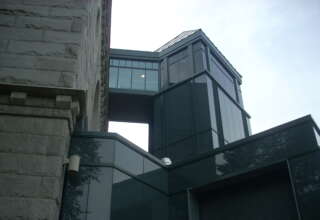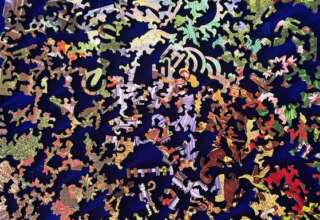
What about Rumsfeld’s fourth condition of knowledge? This is the condition that it most damaging to the reputation of an “expert.” It is when we don’t know what we don’t know that we are in deepest trouble. Rumsfeld had hit it on the head. This fourth condition blocks us from learning about, studying, doing research on, or even spending time in trying to appreciate that which we are unaware is a domain of ignorance for us.
In exploring the nature of Rumsfeld’s fourth condition and the attendant opportunities and challenges of expertise, I wish to take guidance and inspiration from the medieval mapmakers in identifying contemporary domains where the dragons of ignorance (and arrogance) tend to dwell and when the crisis of expertise is often most notable. As noted by those drawing maps during the Middle Ages, it is here where “dragons dwell” These domains are what Kenneth Boulding has labeled the “intersect.”
Living with Dragons is not necessarily all bad. Living-on-the-edge and in the domain filled with challenging dragons can be exciting and addicting. It is a threshold experience (Turner, 1977). This is what Csikszentmihalyi calls a flow experience (Csikszentmihalyi, 1990). It brings us into the special realm that resides between boredom and anxiety. It is at the edge or boundary of any system that we find maximum information and maximum unpredictability, for the edge is the point where a system is conducting transactions with the outside world. This is the edge of knowing. Today’s dragons, however, differ from those of the Medieval world. Unlike the medieval mapmakers who knew about the domains of the world of which they were unaware (Rumsfeld second condition), we are faced today with an abundance of Rumsfeld’s fourth conditions. We don’t even know that we don’t know. The medieval dragons were not as dangerous as the contemporary dragons of which we are unaware that we are unaware.
In this essay, I wish to provide more precision regarding the nature of the dragons that exist in our world. I propose that edge of knowledge dragons typically reside at the boundaries and in the intersection between different systems and different ways of perceiving and taking action in the world. It is at the edge and in the intersection where we find the greatest opportunity for valuable expertise to prevail and where we find the greatest challenges of credibility and usefulness associated with the engagement of expertise.
Peculiar Intersects
In beginning this exploration of dragons, I will briefly describe the nature of and dynamics of Intersect organizations and then describe several different types of Intersect organizations. We can first point to the origins of the term “intersect”. It comes from the analysis provided by Kenneth Boulding, a remarkable, Noble prize-winning economist. Boulding specifically focused on the intersection between different types of organizations. He prophetically noted, almost five decades ago, that a new kind of organization would proliferation and would hold great promise in terms of its ability to solve longstanding problems in our society.









